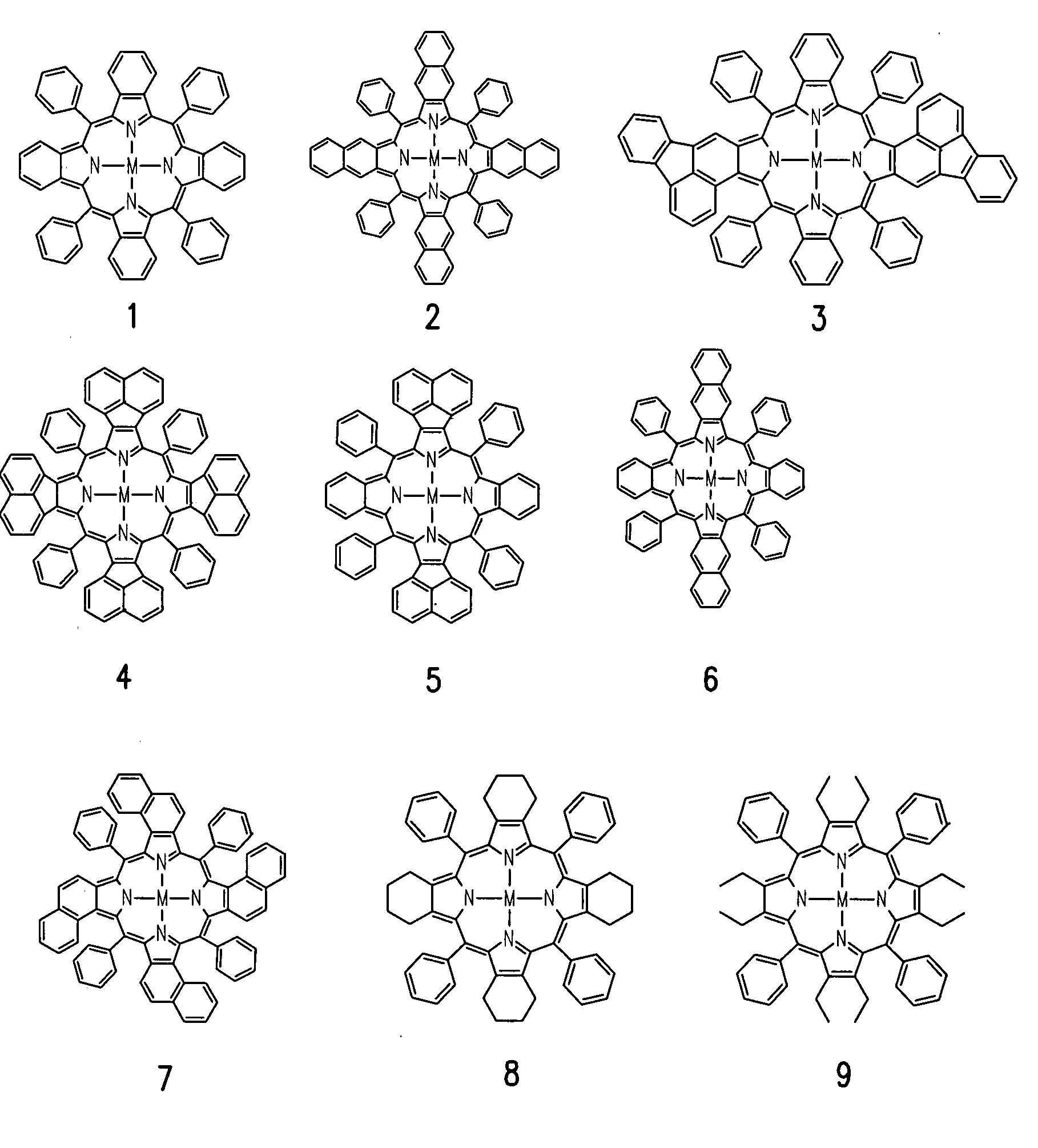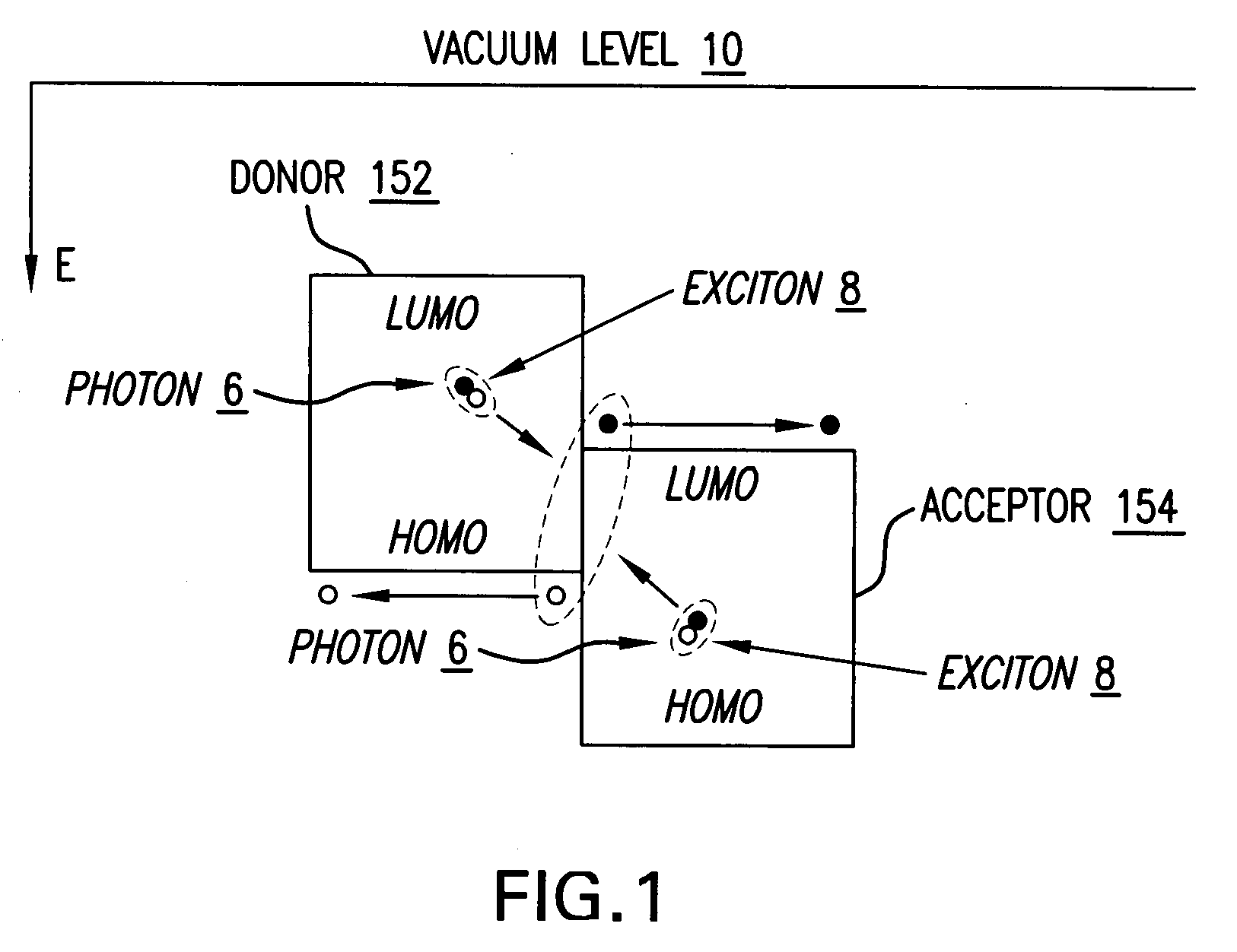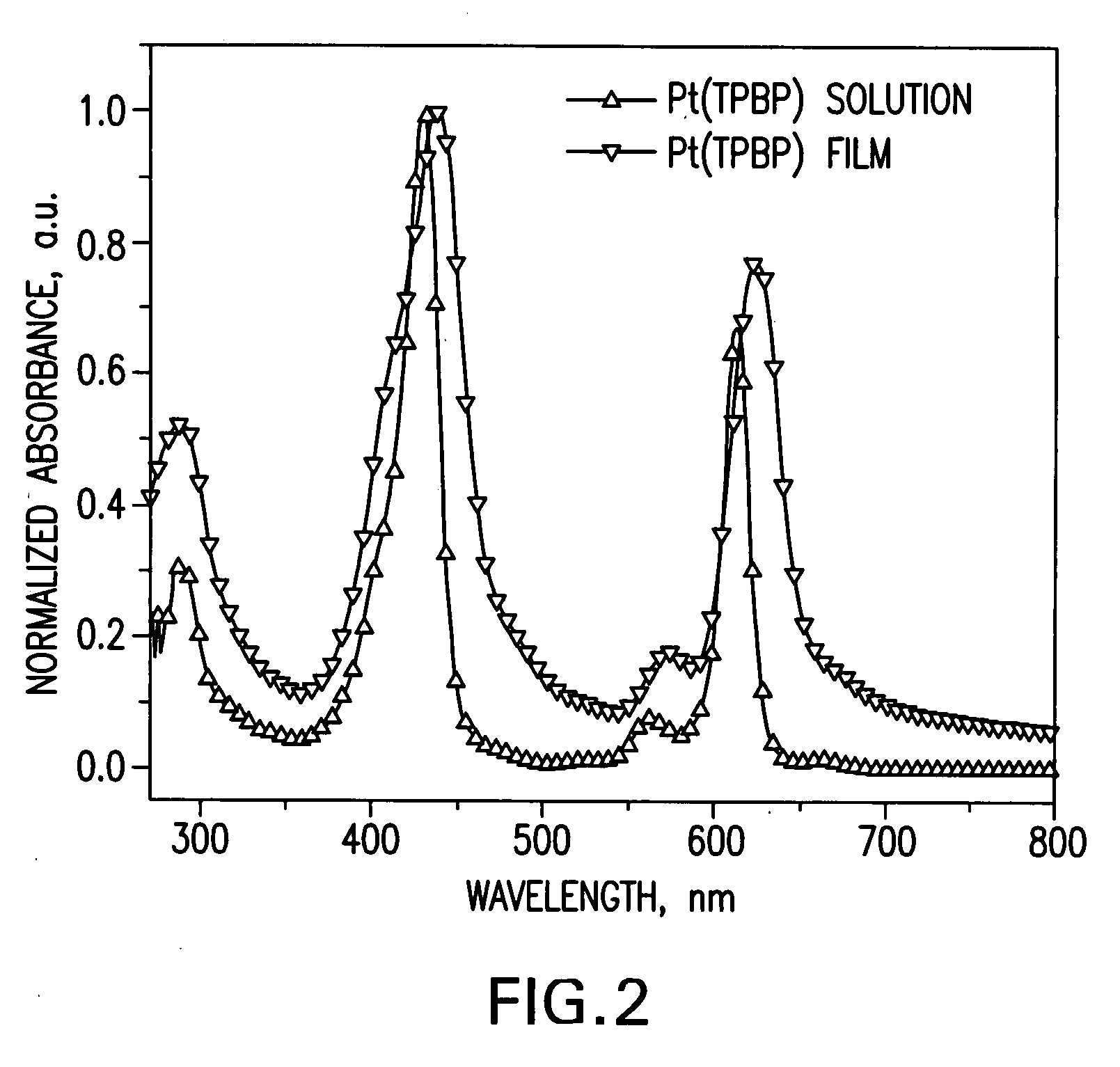Organic photosensitive optoelectronic devices with nonplanar porphyrins
a technology of optoelectronic devices and porphyrins, which is applied in the direction of organic semiconductor devices, organic chemistry, nanoinformatics, etc., can solve the problems of energy loss, limiting the thickness of the organic layer to be used, and unsuitable resistive pathways for separated charges
- Summary
- Abstract
- Description
- Claims
- Application Information
AI Technical Summary
Benefits of technology
Problems solved by technology
Method used
Image
Examples
example
[0130]Photovoltaic cells were grown on ITO-coated glass substrates that were solvent cleaned8 and treated in UV-ozone for 10 minutes immediately prior to loading into a high vacuum (Base pressure 2×10−6 Torr) chamber. The organic materials, M(TPBP) (synthesized in house), CuPc (Aldrich), C60 (MTR Limited), and 2,9-dimethyl-4,7-diphenyl-1,10-phenanthroline (BCP) (Aldrich) were purified by sublimation prior to use. Metal cathode materials, Ag and Al (Alfa Aesar) were used as received. Materials were sequentially grown by vacuum thermal evaporation at the following rates: M(TPBP) (1 Å / sec), C60 (2 Å / sec), and 2,9-dimethyl-4,7-diphenyl-1,10-phenanthroline (BCP) (2 Å / sec) and metals: 1000 Å thick Ag (4 Å / sec) or Al (2.5 Å / sec). The cathode was evaporated through a shadow mask with 1 mm diameter openings. For solution processed donor, the layers where spin coated for 40 s at 3000 rpm for a final 100 Å and at 1500 rpm for 150 Å. The substrates where then annealed at 90° C. for 30 mins unde...
PUM
| Property | Measurement | Unit |
|---|---|---|
| valence | aaaaa | aaaaa |
| valence atom | aaaaa | aaaaa |
| organic | aaaaa | aaaaa |
Abstract
Description
Claims
Application Information
 Login to View More
Login to View More - R&D
- Intellectual Property
- Life Sciences
- Materials
- Tech Scout
- Unparalleled Data Quality
- Higher Quality Content
- 60% Fewer Hallucinations
Browse by: Latest US Patents, China's latest patents, Technical Efficacy Thesaurus, Application Domain, Technology Topic, Popular Technical Reports.
© 2025 PatSnap. All rights reserved.Legal|Privacy policy|Modern Slavery Act Transparency Statement|Sitemap|About US| Contact US: help@patsnap.com



